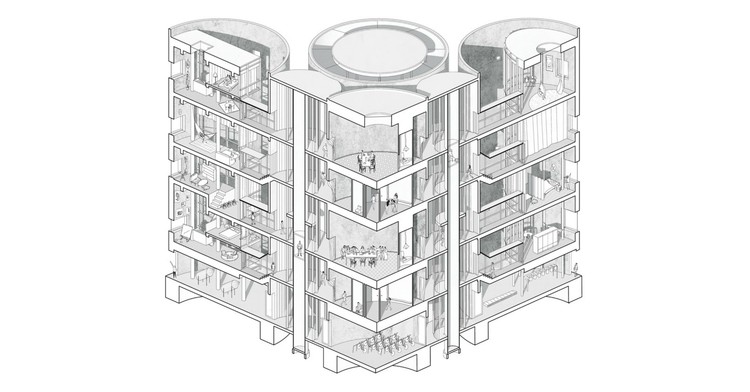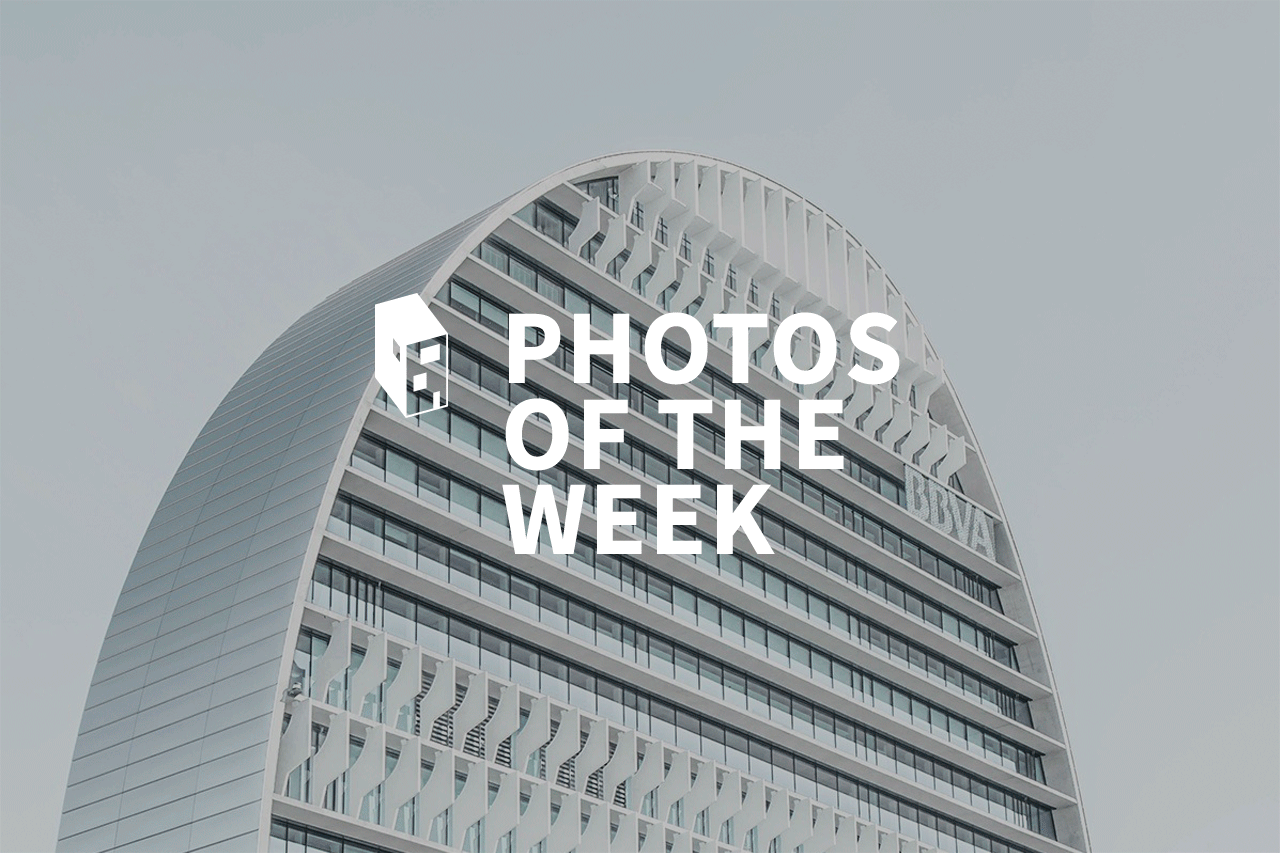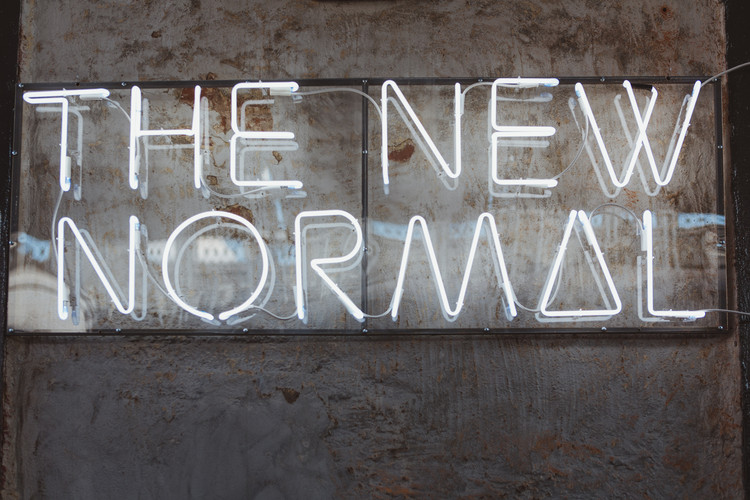
Creating a model for rendering does have its own set of rules. To get you up and rendering as quickly as possible, here are SketchUp's top five tips for prepping your SketchUp model for rendering.


Creating a model for rendering does have its own set of rules. To get you up and rendering as quickly as possible, here are SketchUp's top five tips for prepping your SketchUp model for rendering.

High strength, ease of transport, and simplicity of assembly are among the many major advantages of steel. But while utilitarian steel structures tend to be hidden by architects, working with exposed steel can lead to attractive results. Steel not only brings lightness to a design, but can also offer different expressions of color and texture, depending on the treatment of the material. Below we present a selection of 14 photos of steel architecture from well-known photographers such as Adrien Williams, Imagen Subliminal, and Sergio Pirrone.

Shipping container architecture has developed its own niche in both design and representation. Colorful or grungy? Economical or gentrified? Either way, you look at it, designing with shipping containers is a serious exercise in modular planning. The physical constraints of the object make designing projects with containers a complex task, which demands specific studies in spatial organization.
The responses using this element in architecture are great and diverse, so we have selected a number of different project plans, both helpful and inspirational, that rise to the shipping container-challenge of design.
Check out selection of 10 architectural project plans using shipping containers below:
Only three of the Arts & Architecture Case Study Houses were built outside Los Angeles, and those three formed a united concept. The Triad Houses in La Jolla, a seaside suburb of San Diego, share a single driveway, motor court, and design vocabulary, while being created to meet different needs.
In keeping with the Case Study mission, all three houses used open-plan design, affordable modern materials (such as aluminium and concrete with wood frames), and plenty of glass to create a fresh and open mood. The emphasis was on strong geometric forms, careful detailing, horizontal lines (with perfectly flat roofs) and – this being the Californian coastline – dramatic views and outdoor living space, creating the illusion of more interior space than was actually present.

This article was originally published by Common Edge as "Why Can’t We Create Brand New Walkable Communities?"
I have lived in neighborhoods where you can walk around, to a store, a movie, a restaurant, for 40 years, counting my college days. I grew up in a ranch house with a driveway, but came to adulthood in foot-based parts of cities.
Others have also rediscovered the joys and benefits of walkable places. They have done this first in a trickle, then in a flood. While in total numbers it may still be a minority taste, it’s a fashionable taste now, one heralded in movies and TV shows. Fewer people aspire to live in the big house with the three-car garage.

This article was originally published by RenderPlan as "9 Powerful Photoshop Tips for an Effective Workflow."
A powerful software like Photoshop can turn an average looking image or drawing into a stellar asset for a project. The trick is to learn to use some of its best features and optimize your workflow for maximum efficiency.
Over the years Photoshop has become the go-to tool for architects for any kind of image-based editing. The software has become indispensible thanks to its versatile features. It is a powerful tool for tweaking renderings or create them from scratch. Some of the most renowned visualization artists rely heavily on Photoshop and use very crude masses done in 3d programs as a starting point. From photorealistic renderings to editing photographs of built projects and beautifying line work, Photoshop can be an architect’s best friend.

The overlap between cinema and architecture is a topic that has already been debated and even addressed in several articles published in ArchDaily. It is difficult to imagine a film that is not related in any way to the architecture, either through the construction of scenarios, the locations, or even the compositions within each plane and sequence - that make use of light, shadow, varied scales, and characters.
In many films, architecture and the city play a much more decisive role than the mere backdrop or stage for the narrative, acting as crucial elements or even characters. Next, we selected five films in which landscape and urban spaces are essential for the construction of the plot.

This article was originally published on Brandon Hubbard's blog, The Architect's Guide.
Many people cringe at the idea of having to negotiate their salary. Often this can result in thousands of lost income opportunity if not handled correctly.
I am not advocating you ask for an outrageous sum, but you should be clear about the value you bring to the table. You need to be aware what your skills and qualifications are worth in the current marketplace. For your reference, I covered those variables in greater detail in a previous article, 5 Factors Affecting Your Architect Salary.
Most of the following tips refer to a new job offer but some also apply to renegotiating your current architecture salary.

When it comes to forms of architectural representation, there is no method more expressive or foundational than the drawing. The series of decisions—drawing utensil, paper type, line style, hand versus digital—combined with the choices of what an architect includes (or excludes) in their drawings reveal the true intentions behind the design of a project in perhaps the noblest and purest fashion.
In previous years, we've published round-ups of our favorite images from our database of selected projects (which we will do again this winter!), but this year, we wanted to do something a little different to engage with our community: we asked our readers to submit their own best drawings. The response was overwhelming – we received more than 1200 drawings from our network of readers across the globe, ranging from atmospheric perspectives to interpretive sketches to highly-technical sections.
From those submissions, the ArchDaily team has selected 80 of our favorites, organized into 7 categories: Visualizations, Axonometric - Isometric, Sections, Collages, Context, Sketches and Plans.
Check them out, below.

Without a doubt, it is interesting to enjoy architecture from a new perspective. Minimalist photography, characterized by clean compositions where geometry and abstraction take center stage, is one of the most popular trends when it comes to documenting architecture. In celebration of this distinctive photographic style, we have selected 14 minimalist images by prominent photographers such as Joel Filipe, Sebastian Weiss, and Nelson Garrido.

This article was originally published by Archipreneur.
Virtual reality and augmented reality tools for the AEC industry are getting increasingly better and more optimized. As prices keep dropping, there are fewer reasons why every architect, engineer, contractor, and owner shouldn’t use some form of VR/AR in bringing their projects to life.
From being a novelty a few years ago, VR/AR solutions are slowly becoming a medium that’s transforming the way professionals in the AEC industry communicate, create and experience content. Offering a more immersive experience of architectural designs, but also products and areas related to space building, VR and AR tools are becoming an industry standard that offers rapid iterations and opportunity to refine designs in collaboration with clients and colleagues.

Italy-based New Fundamentals Research Group recently designed and built a full-scale prototype of an experimental barrel-vaulted stone structure for SNBR, a French company that specializes in cutting-edge stone construction. The structure is named Hypar Vault in a reference to the geometry of its constituent blocks; it uses two types of prefabricated stone modules—one type is the mirror image of the other—whose designs are based on the hypar (hyperbolic paraboloid), one of the only "doubly-ruled" surfaces in geometry. The use of these configurations allowed the vault to be constructed with almost zero wasted stone.

The New Normal, a three year-long educational programme at Moscow's Strelka Institute of Architecture, Media and Design, is focused on "the opportunities posed by emerging technologies for interdisciplinary design practices." In this short essay, taken from a new book of the same name, course director Benjamin Bratton lays out the thesis behind the project.
Something has shifted, it seems. We are making new worlds faster than we can keep track of them, and the pace is unlikely to slow. If our technologies have advanced beyond our ability to conceptualize their implications, such gaps can be perilous. In response, one impulse is to pull the emergency brake and to try put all the genies back in all the bottles. This is ill-advised (and hopeless).
Better instead to invest in emergence, in contingency: to map the new normal for what it is, and to shape it toward what it should be.
Welcome to the latest installment of #donotsettle extra, the series in which Wahyu Pratomo and Kris Provoost accompany some of their #donotsettle videos with in-depth textual analysis of the buildings they visit.
After last month’s visit to OMA’s first building in Shanghai, we stayed in China and headed north—far north. We are happy to take you to a building that has been high on our “to-do list.” Harbin, a provincial capital city in the north-east of China, has previously only been known for the large-scale ice sculptures that appear during the winter months. In the past two years, this has changed, at least for the architecture geeks spread around the world.
Ma Yansong and his team at MAD Architects designed and built the Harbin Opera House in a new part of the city. First announced in 2013, the building was completed at the end of 2015. Since then, an endless stream of breathtaking photos has been shared on the internet. We had to see this project with our own eyes! We ventured out to Harbin and spent a day at the Opera.

This short essay, written by the author and critic Jonathan Glancey, coincides with the launch of the inaugural Architecture Drawing Prize – a competition curated by the World Architecture Festival, the Sir John Soane's Museum, and Make. The deadline for the award is the 18th September 2017 and successful entries will be exhibited in both London and Berlin.
For John Ruskin, Venetian Gothic design in the guise of polychromatic gasworks in Brentford, ornate factory chimneys in Croydon, glistering gin palaces in Bloomsbury and even the well-meaning Reform Club in Manchester was nothing short of anathema. Even at their risible best, these flamboyant Victorian buildings were idle travesties of the influential 19th Century critic’s beloved Ca’ d’Oro and Palazzo Ducale adorning the Grand Canal.

This article was originally published by Common Edge as "10 Lessons Learned by Rereading Jane Jacobs."
Last week I was in the middle of packing and came across a well-thumbed copy of The Death and Life of Great American Cities. I don’t remember when I read the book, but it was way more than twenty years ago (and predates my professional involvement with cities). As a very belated tribute to the anniversary of her 100th birthday, I decided to dip back into that remarkable book. Here’s ten takeaways from the godmother of the American city.
Norman Foster only began to casually upload photos to Instagram in 2017. But don’t be fooled by his short tenure on the thirteen-year-old social media platform. At the ripe old age of 84, the British architect has demonstrated that his talents go far beyond designing buildings.
What makes Norman Foster’s Instagram feed more charming than Bjarke Ingels’, or more impressive that Richard Branson’s, is a complex mix of je ne sais quoi, athletic prowess, and a taste of the “he’s just like us!” Architects love that the photos provide behind-the-scenes insight into the life of one of the most prolific and revered professionals of our time. Behind the accolades and behind the Barony, we discover a man swimming, biking, rowing, and helicoptering his way into his eighth decade. It’s reassuring to see that an architect who has always sought to stand at the vanguard of the innovative and the bold doesn’t show signs of letting up anytime soon.
Lord Foster’s Instagram posts show us positive, human endeavors that we should respect as a profession: spending time with family, taking a vacation, and, most importantly, enjoying his work as an architect – a creative passion, or way of living, that permeates everything we do. If we are indeed moving beyond the age of “cults of personality” cultivated by the media, it’s fascinating to see that Norman Foster is taking full advantage of the one-to-one relationship between public figure and the public by openly showing us what he enjoys, treasures, and strives to achieve.

This month marks the 5th anniversary of the establishment of ArchDaily Mexico, one of our fastest-growing country-specific sites dedicated to reporting and analyzing the latest in architectural news and projects coming out of the world's largest Spanish-speaking country.
To celebrate the event, we asked ArchDaily Mexico readers to share images of their favorite Mexican projects, and to up the ante, offered up some great ArchDaily prizes to the best pictures!

Contrary to how Hollywood movies portray the quintessential architect—creative, sensitive, and virtually flawless—architects are a diverse bunch of fallible people. This stems from the fact that the study and practice of architecture are wrought with several “perils.” Architecture school is a beast, if not the profession at large, and it essentially reinvents the psyche of its students by simultaneously breaking them down and building them up—say hello to unresolved issues!
While this process produces bright intellectuals with a deep understanding of architecture’s place in society, it can also end up shaping architects into pretentious snobs. Young architects invariably graduate with a distinct outlook on life. Pair that with a largely thankless job and architects soon discover that they can only relate to other architects. Rare friends who bravely stand by an architect through thick and thin deserve a strong pat on the back because architects, despite their innumerable charms, exhibit several incredibly annoying traits. The following is a compilation of eight complaints that non-architect friends and partners have against their architect counterparts:

Due to its ability to be shaped into complex forms and the diversity of textures that it can offer, concrete is one of the favorite materials of many architects, who appreciate its capacity to help them realize their designs. For this reason, for this week's Photos of the Week we have selected 20 images that highlight the beauty and expressiveness of this material. Read on to see a selection of renowned photographers such as Brigida González, Bruno Candiotto, Élena Marini Silvestri, and Raphael Olivier.

If you ever have those moments where you take a step back from your life and feel like you’ve suddenly fallen into a scene from a movie, you may appreciate the subreddit /r/AccidentalWesAnderson. Director, producer, screenwriter, and actor Wes Anderson is well known for creating scenes in his films that blur the lines between the real and the unreal. His extreme symmetry and restricted color palettes can often give the impression of a surreal, self-contained world. The purpose of the Accidental Wes Anderson subreddit is for users to post photos of real-world architecture and scenes they’ve stumbled upon that look like they could be stills from one of Anderson’s movies, with Redditors finding Anderson-esque scenes around the globe in everything from bathrooms to staircases to city streets. Even a viewer unfamiliar with Anderson’s films can browse the collection of photos and easily understand his aesthetic. Below is just a small selection of some of the most evocative photos to be found on the subreddit.

Though some may now know him only as the father of Eero Saarinen, Eliel Saarinen (August 20, 1873 – July 1, 1950) was an accomplished and style-defining architect in his own right. His pioneering form of stripped down, vernacular Art Nouveau coincided with stirring Finnish nationalism and a corresponding appetite for a romantic national style and consciousness; his Helsinki Central Station became part of the Finnish identity along with Finnish language theaters and literature. Later moving to America, his city planning and Art Deco designs resonated through western cities in the first half of the 20th century.

Son of pioneering Finnish architect Eliel Saarinen, Eero Saarinen (August 20, 1910 – September 1, 1961) was not only born on the same day, but carried his father's later rational Art Deco into a neofuturist internationalism, regularly using sweeping curves and abundant glass. Saarinen's simple design motifs allowed him to be incredibly adaptable, turning his talent to furniture design with Charles Eames and producing radically different buildings for different clients. Despite his short career as a result of his young death, Saarinen gained incredible success and plaudits, winning some of the most sought-after commissions of the mid-twentieth century.

From NEON.
NEON is a nonprofit organization that works to bring contemporary culture closer to everyone.
The Theater of Disappearance is a site specific, outdoor and indoor installation by Argentinian artist Adrian Villar Rojas in Greece, at the National Observatory of Athens (NOA), located on the archaeological site of the Hill of the Nymphs. Built in 1846, the National Observatory is the first scientific research institution in Greece and consolidates nearly two centuries of astronomy since Greek independence in 1832. This is a project curated by Elina Kountouri, that forms part of NEON’s work to establish a link between contemporary culture and the historical and archaeological heritage of Athens.